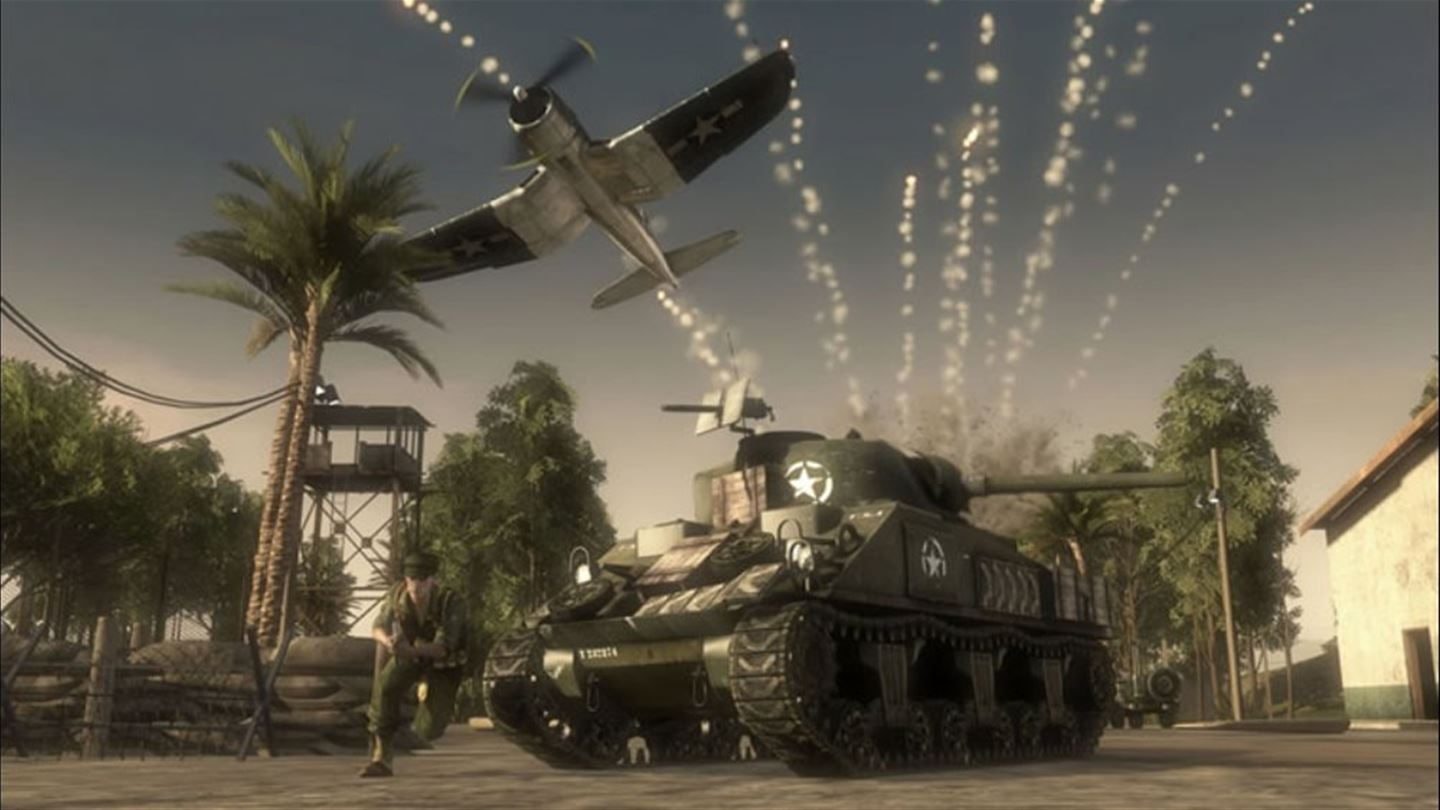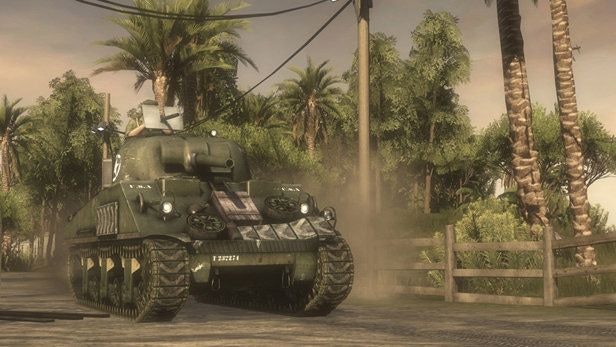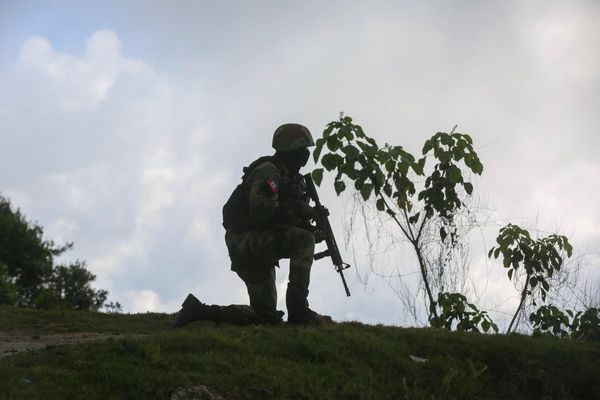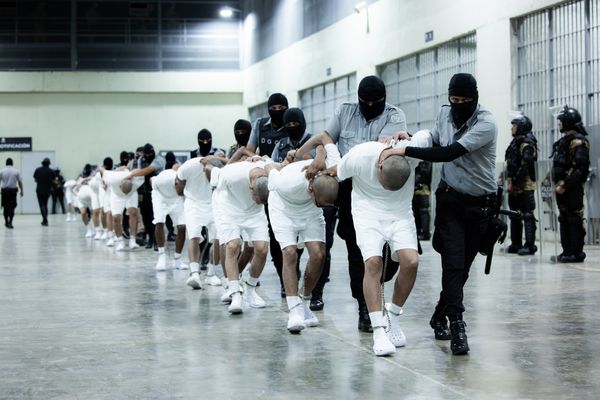
Fifteen years ago, gamers were still getting used to the idea of small games. Up until the Xbox 360 and PS3 era, games were priced between $50 and $60, with the occasional value title priced at $20. But that would change with the advent of Xbox Live Arcade. Titles like Geometry Wars, Undertow, Castle Crashers, and even Uno showed that games of all scopes and sizes could offer the same amount of fun for a much more affordable price. But until the release of DICE’s Battlefield 1943, this lane was reserved for the then-growing indie sector and artsy side projects from more established developers.
Battlefield 1943 was a departure from what players expected from their Live Arcade games. This wasn’t a 2D-side scroller or a puzzle game or a re-release of a beloved fighting game. This was Electronic Arts and DICE making a AAA, multiplayer-only game and releasing it as a download-only title for just $15.
As the name implies, Battlefield 1943 is a pseudo-remake of the very first game in the series, Battlefield 1942. It’s still a class-based first-person shooter set in WW2, but the graphics were cleaned up using DICE’s then-new Frostbite Engine. In fact, Battlefield 1943 was just the second game to use Frostbite after 2008’s Battlefield: Bad Company. With the engine’s emphasis on destructible environments, it meant structures like houses, bridges, and roads could be leveled and terraformed.

While DICE wasn’t skimping on presentation, Battlefield 1943’s made the asking price make sense with a few concessions. The game was simpler than its full-priced counterparts, taking a cue from another series spinoff Battlefield Heroes. Instead of the typical four classes, there were three: Infantry, armed with sub machine guns and rocket launchers, Rifleman, armed with a a semi-automatic rifle and noob-tube, and the Scout, armed with a sniper rifle and a few sticks of dynamite. Ammo is infinite and explosives worked on a cooldown system.
Players were given three maps to play on: Wake Island, Guadalcanal, and Iwo Jima. These were gorgeous remakes of classic maps from 1942. While the selection seems limited, the size of these maps made them endlessly replayable. You could finish a match without stepping foot on entire corners of these battlefields. Planes, trucks, tanks, boats, motors, and turrets were all available for players to use, allowing buildings and critical structures to be destroyed and altered differently in every match, and for skirmishes to take place by land, sea, and air.
The game also had just two modes: Conquest and Air Superiority. In Conquest, two teams of 12 (made up of four squads of three) would fight for five control points across these massive maps. You’d get into intense skirmishes with enemy squads fighting your way to these crucial points on the map, or finding creative ways to slow the enemy.
Air Superiority was a novelty, airplanes only mode deathmatch more. It provided a fun reprieve from the more boots on the ground action, and gave players a chance to learn their way around the the fighter planes in the main game.
In 2009, publishers were still figuring out the value proposition for such an offering. And because of its $15 price tag, Battlefield 1943 seems like such an oddity a decade and a half later. Compare the most recent title in the series, Battlefield 2042 to this value-priced spinoff game and you’ll be left wondering where things went wrong in our dear games industry.
Despite both games being multiplayer only, 2042 asks players for $60 upfront, then nickels and dimes more cash via battle passes and perks. Meanwhile, 1943 gave you everything you needed to have hours of fun for a fraction of the price.

Sure, cosmetics and progression system are sorely limited compared to the multiplayer standards of today. But you didn’t need the sensory dopamine hit from flashy progression bars filling up between matches. You don’t need the ability to unlock incrementally better guns over time. You were paying for the ability to play a simple but endlessly fun game. The motivation to play more wasn’t the unlockables, but the cool stuff that could play out in a variety of different ways every time you dropped into a match.
Unfortunately, there’s no way to relive the fun of Battlefield’s best spin off. The servers for Battlefield 1943 were taken offline last December. Still, Battlefield 1943 should be remembered as a stroke of brilliance from DICE and EA. I spent ages playing this one with friends, and continued well after the release of Bad Company 2 in 2010. And at a time when the publisher doesn’t quite know what to do with the military shooter franchise, I look back on Battlefield 1943 with even more fondness. It was the perfect multiplayer game that work both on its own, and as a gateway into the popular franchise.







